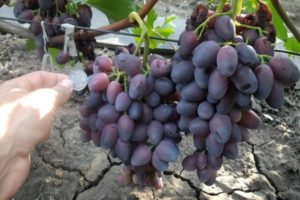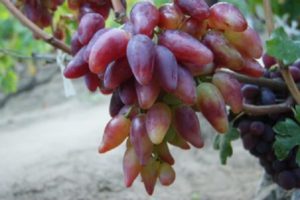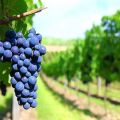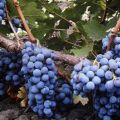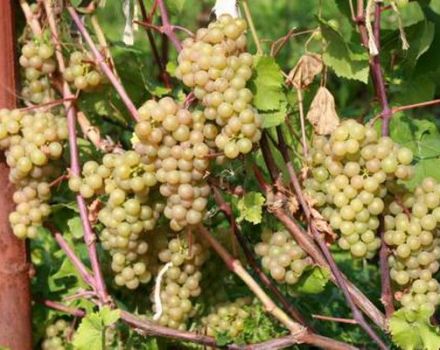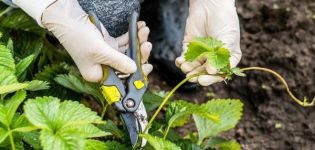Description and history of selection of Sauvignon grapes, planting methods and rules of care
Sauvignon grapes are characterized by a wide cultivation area: European countries, countries of the American and Australian continents, countries of South Africa and the Middle East. The main purpose of this variety is winemaking for table wines and enrichment of taste in the production of wines from other grape varieties. It is successfully grown on the territory of Russia.
History of breeding Sauvignon
The homeland of the variety is France, its popularization is second only to Chardonnay grapes... The variety was obtained by natural crossing of Tramner and Chenin Blanc in the Loire Valley. In a short time since the middle of the 19th century, it spread to almost all continents of the world.
Advantages and variety of species
This variety without blending is used for the production of elite expensive varieties of dry and semi-sweet wines, champagne, grape juices; like any grape, it is delicious fresh. The exquisite taste of the variety changes depending on the ripeness of the berries, weather conditions during ripening, and the composition of the soil.
Sauvignon Blanc is used to enrich the taste of white varieties of other wines.
Blanc means white in French. Sauvignon Blanc berries are light straw color, wines from this variety are light with a golden sheen, it has related varieties obtained by natural changes: Sauvignon Gris (or Rose), Sauvignon Noir, Sauvignon Violet, which have similar properties and taste.
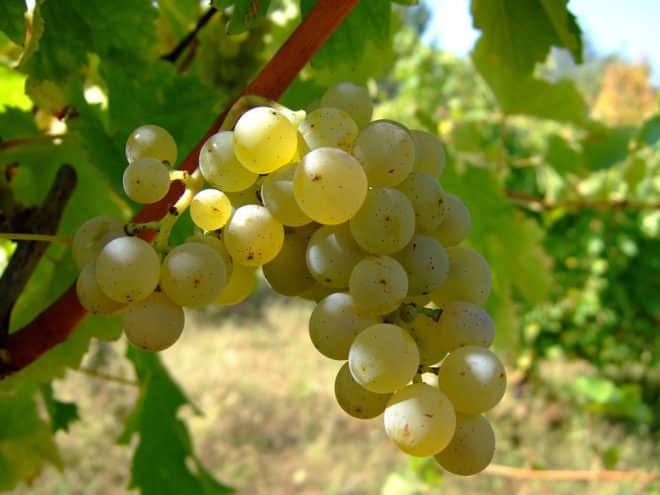
Variety specifications
Sauvignon Blanc belongs to the technical varieties used for winemaking on an industrial scale. Specifications include a description of the vine, bunch of grapes, ripening times, and yield of the variety.
Vine
The grape bush is formed by vines - these are the shoots on which the grapes are formed. Young shoots are reddish-brown in color, with growth they become green. Over the years, the vines thicken and become tree-like. Leaves are medium-sized, leathery, dense, strongly dissected into 3 or 5 parts.
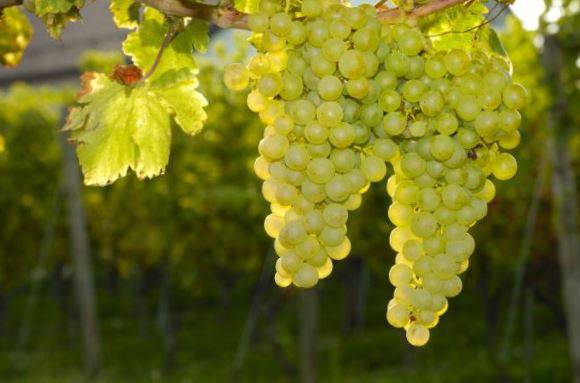
Bunch
The grapes are oblong, small in size, densely collected in compact clusters, which have a cylindrical shape up to 15 centimeters long and up to 10 centimeters in diameter. Grape berries have 2-3 seeds, and the berries have a dense skin. The bunch weighs up to 130 grams.
Ripening period and yield
Sauvignon Blanc is a late ripening variety. Depending on weather conditions, harvesting is carried out in September-October. The yield of the variety is low, the plant needs proper care, suitable weather conditions during the summer and a special soil. In vineyards, with proper care, up to 7000 liters of wine are obtained per hectare.
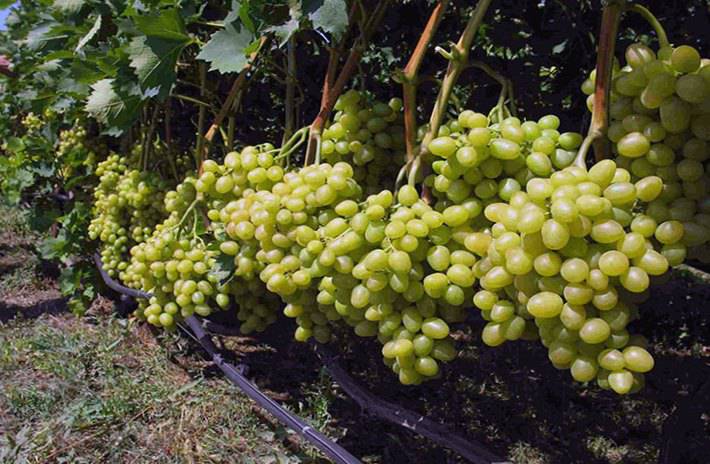
Climatic conditions for growing
Sauvignon Blanc prefers a cool climate and can withstand temperatures down to -25 degrees. In Central Russia grapes harbor for the winter; without shelter, young shoots of the plant freeze out, it is necessary to re-form the bush.
Breeding methods of the variety
The grapes are propagated by biennial or annual, well-developed seedlings. In their absence, stems (annual shoots) are planted, which are harvested from a one-year-old or root vine 40-50 centimeters long.
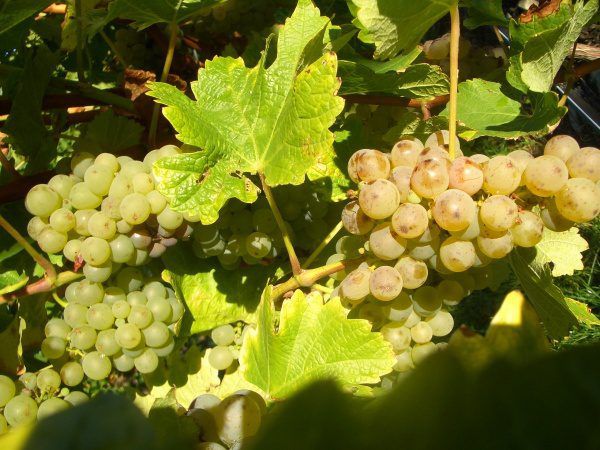
Landing
Grapes are a heat-loving plant, demanding light. A place for growing crops is chosen on the southern, southwestern and southeastern slopes. In amateur gardens, the most illuminated places are allocated for grapes. On flat areas, rows of grapes are planted from south to north, and on slopes from east to west.
When planting grapes taking these requirements into account, it will receive more light and heat, grow quickly and give a good harvest.
Tips for choosing seedlings
For planting grapes, seedlings with a well-developed root system are chosen, the roots should be well branched, with a white core at a break, up to 10 centimeters long. It is better to choose seedlings, rooted, with a clod of earth. The vine should have 5 to 10 buds. Rooted cuttings must meet the same requirements.

Timing
Planting of seedlings or rooted cuttings is carried out in April or May, when the air and soil warms up to 15 C. These terms are adjusted depending on the regions, the timing of the onset of the spring season, its transience.
Layout and depth of the landing hole
Sauvignon Blanc belongs to a medium-sized variety, the distance between the rows when planting should be 2 meters, and between the bushes - 1.75 meters. When planting, it is necessary to take into account the fertility of the soil, since this variety has powerful bushes. In the case of poor soil, the distance between the bushes is increased to 2 meters. For planting seedlings, square holes are dug 0.5-0.7 meters deep, 0.5 meters wide. At a distance of 25 centimeters on both sides, a 0.6 meter long peg is hammered.
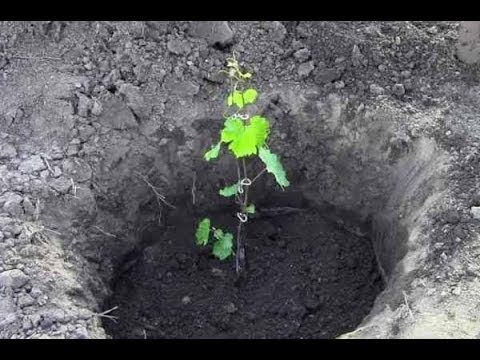
Seedling feeding
To feed the seedling, 100 grams of potash fertilizer, 400 grams of superphosphate, 150 grams of ash, a bucket of humus are introduced into the hole; on heavy soils - 2 buckets of river sand, everything is dug up from the ground. The seedlings are watered with Kornevin for better rooting.
Care of young and mature vines
To obtain a stable harvest, it is necessary to properly care for the grapes. Care includes: fertilizing, watering, weeding, forming a bush, pruning vines, preventing pests and diseases.

Fertilizer
Manure contains nitrogen, potassium, phosphorus and trace elements. Every 3 years, it is brought in at 6-8 kilograms per 1 square meter (in the fall before digging). Together with manure, phosphorus and potash fertilizers are used at the rate of 50-60 grams per 1 square meter. Potassium humate - a universal fertilizer that stimulates plant growth and development; feeding is carried out according to the instructions. Nitrogen fertilizers are used annually in the spring, 3-4 grams per 1 square meter.
Watering
This variety does not like excess moisture, watering is carried out as the earth dries up. At a depth of 20 centimeters, they take a handful of earth and squeeze it in a fist, if the earth crumbles without forming a lump, then watering is required. Excess water leads to decay of the root system or the development of gray rot.
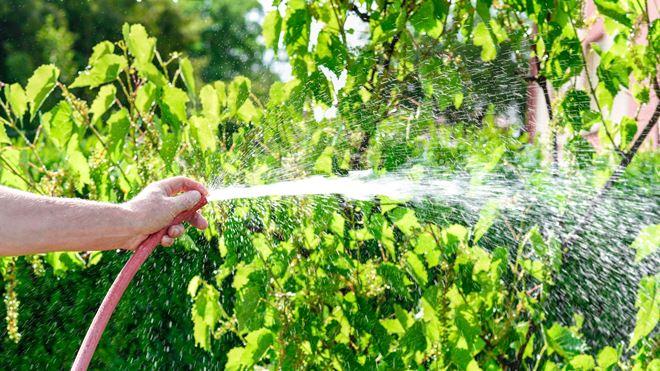
In the first year (in dry summer), the grape bush is watered up to 4 times, 4 buckets of water under the bush. After watering, the bush is mulched with humus 10 centimeters thick.
Formation
The formation of the bush begins from the first year of planting and is performed annually. Fan and multi-arm fan-shaped grape bushes suggest from 4 to 8 fruit arms extending from the base of the bush. Each has a fruit link — a fruit vine and a replacement knot.
Annually, the vines that have borne fruit are replaced with annual shoots. This work requires skills; you can clearly see the formation of a bush on the Internet.
Prevention of pests and diseases
Sauvignon Blanc is resistant to infection with mildew spores, oidium. In rainy seasons, it can become infected with gray mold spores. When berries are infected, a noble mold is formed, which gives the wine an exquisite taste, when leaves are infected, work is carried out to collect and destroy them.
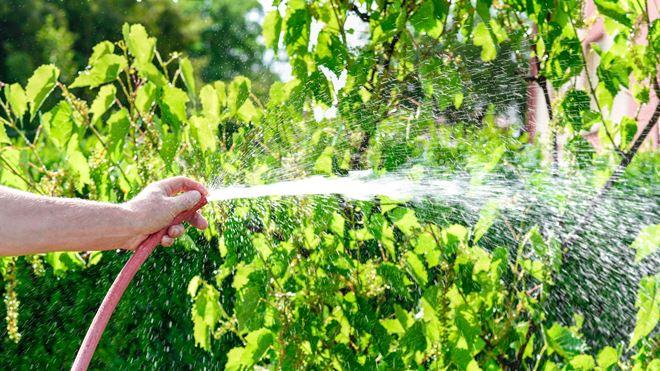
Of the pests, the leaves of grapes are affected by ticks, and the berries are eaten by wasps. For preventive purposes, it is enough to treat the grapes with combined fungicides in spring and after flowering. Special traps are set for wasps.
Collection, storage and processing of crops
Sauvignon has poor keeping quality, berries are perishable, after a week they begin to rot.If you wish, you can quickly prepare juice at home and process the grapes into wine. The taste and properties of berries of this variety do not allow the use of wooden containers in the technology of making wine - glass bottles are used, the strength of the wine reaches 13 ... During storage, the taste of wine does not improve, it is consumed in the first years of production. Wine is stored in glass bottles for no more than 3 years.
